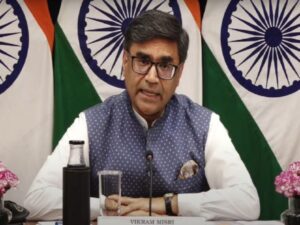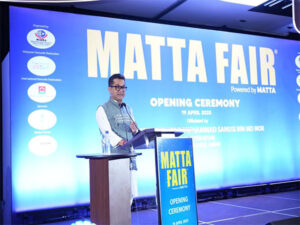‘Gun control is dead and we killed it’: unmasking the ‘lonely incel’ who designed the world’s most popular 3D-printed firearm
London, Jun 30 (The Converation) Every year, on Easter Sunday, Irish republicans commemorate their martyrs, remembering lives lost during the 1916 Easter Rising and in the years since. Such events have a pattern: a street parade, speeches and flowers at the cemetery.
The 2022 commemoration, however, was unusual for the presence of four men wearing balaclavas and dressed all in black. They were members of the dissident republican paramilitary group Óglaigh na hÉireann (ÓNH).
This was the group’s first public appearance since its ceasefire announcement in January 2018 – but it also carried wider significance for terrorism experts because of the weapons that two of the men were carrying. This was the first time paramilitary members in Northern Ireland had been seen with 3D-printed guns – specifically, a .22 calibre modification of the FGC semi-automatic firearm.
FGC stands for “fuck gun control”, and the acronym reflects the ideological leaning of its designer – and many others involved in the development of 3D-printed weapons.
The first 3D-printed firearm emerged in May 2013 with the release of the Liberator, a handgun created by Cody Wilson, a University of Texas law student and libertarian pro-firearms activist.
Essentially a proof of concept, Wilson let the BBC film him firing the gun before releasing the open-source design for anyone to download. Its release caused a sensation: the gun was pictured on the front page of the New York Post, with fears it could be smuggled past metal detectors on to planes (in fact, a metal detector would spot the gun’s metal firing pin and any ammunition).
Despite the hype, the reality was that the gun was impractical and unreliable. The Liberator could only shoot one bullet before it needed reloading, and was prone to falling apart from the pressure of being fired. The technology still had a long way to go, both in terms of the designs of the guns and the accessibility of 3D printing.
It was not until spring 2020 that the threat of 3D-printed guns grew significantly with the emergence of the FGC-9 (“9” denotes its 9mm bullets). This futuristic-looking, semi-automatic pistol calibre carbine required no regulated components and was fully DIY. About 80% could be made from plastic using a standard 3D printer, while the remaining metal parts could be fashioned from widely available steel tubes and springs.
The open-source design – which was quickly shared in many like-minded chatrooms – was accompanied by a meticulous, step-by-step instructional guide akin to an Ikea assembly booklet. All of this, the gun’s creator wrote, was to overcome “regulations and tyrannical laws” on gun ownership. Later, his group released a guide to making homemade 9mm ammunition.
Since then, we have seen evidence of the firearm’s use worldwide. It dominates online discussion of 3D-printed firearms and has been broadly adopted by various hobbyists, organised criminals, insurgents, and terrorists.
The gun’s mysterious designer, who used the pseudonym JStark1809 when he posted in chatrooms, estimated it would take a novice eight days to make the gun from scratch. He posted an upgraded Mark II version of the FGC-9 a year later, and boasted in one anonymised interview that, by bringing out these designs and sharing them freely: “We fucked gun control for good … Gun control is dead, and we killed it.”
Since the release of the FGC-9, the occurrence of 3D-printed guns has become more prevalent all over the world – from organised criminals in Europe to anti-junta rebels in Myanmar.
In May 2022, police stopped a car in Bradford in the UK and discovered a man transporting an FGC-9. Alongside two accomplices, he had been selling 3D-printed guns on the black market. A search of his accomplice’s house revealed many more FGC-9 components. In 2023, the trio became the first people in the UK to be convicted of trying to supply other criminal groups with 3D-printed firearms; they were sentenced to a combined 37 years in prison.
As a researcher at the International Centre for the Study of Radicalisation at King’s College London, I’ve been keeping track of this and many other cases around the world involving the production and use of 3D-printed guns.






